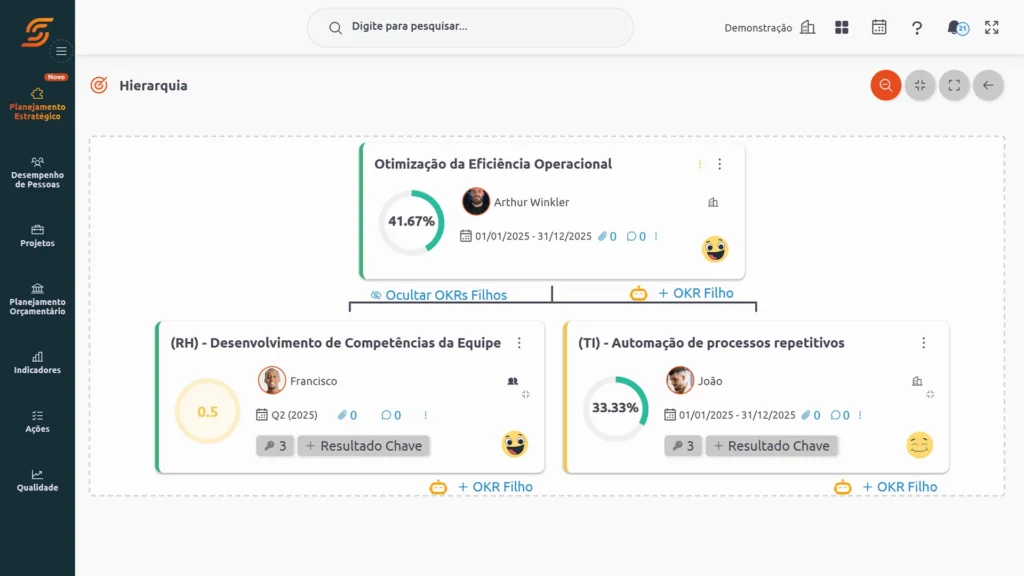If you’re a business owner—or even work at one—you’ve likely heard of SWOT Analysis. The acronym stands for Strengths, Weaknesses, Opportunities, and Threats. Also known as the SWOT Matrix or FOFA Matrix (in Portuguese), it’s a strategic tool used to assess these four critical elements within any organization.
SWOT Analysis is an essential technique that helps companies evaluate both internal and external factors that can impact their success. It enables business leaders to clearly see what’s working well, what’s holding them back, and what risks or opportunities may lie ahead.
In short, SWOT Analysis provides a comprehensive look at a company’s current situation—highlighting strengths to leverage, weaknesses to address, opportunities to seize, and threats to mitigate.
In this article, we’ll explore why SWOT Analysis matters, how it benefits your organization, and guide you through the steps to build an actionable, data-driven SWOT Matrix.
Why Is SWOT Analysis So Important for Businesses?
As we’ve seen, SWOT Analysis is a structured list of your company’s strengths, weaknesses, opportunities, and threats. Its real power lies in promoting collaboration across teams—bringing together perspectives from management, sales, customer service, and even external stakeholders like clients or partners.
It also helps align teams under a common strategic vision, fostering engagement and shared ownership of business decisions.
One key benefit of SWOT Analysis is that it challenges assumptions and exposes blind spots. For example, you might believe that customer service is a strength—yet if your company lacks a solid digital presence and fails to respond to social media inquiries, customers may see this as a weakness instead.
This type of insight only comes through honest, well-structured SWOT Analysis.
Key Benefits of SWOT Analysis for Your Organization
Here’s what SWOT Analysis can do for your business:
- Improve business awareness: Understand where your company stands and how it’s performing.
- Market positioning: Identify your strengths and plan how to enter or grow in your target market.
- Pinpoint weaknesses: Detect internal flaws that may be affecting efficiency or growth.
- Strategic planning: Build a long-term roadmap based on real data from your SWOT Analysis.
- Risk management: Anticipate threats and prepare contingency plans.
- Opportunity mapping: Uncover areas to innovate, expand, or gain a competitive edge.
By regularly conducting a SWOT Analysis, you ensure that your strategies remain aligned with your business environment and ready for the future.
Understanding the SWOT Matrix Structure
To build an effective SWOT Matrix, divide your canvas into four quadrants:
Strengths
What does your business do exceptionally well? These are your core competencies—the areas where you outperform competitors.
Examples:
- What do you do better than anyone else?
- What unique values drive your business?
- What gives your brand a competitive edge?
Remember: something is only a “strength” if it delivers real advantage in your market.
Weaknesses
These are internal limitations or challenges that hinder performance. They might relate to operations, resources, processes, or even culture.
Tips:
- Be honest and specific.
- Consider outsider feedback to avoid internal bias.
- Focus on what can be improved.
Opportunities
Opportunities are external factors that could benefit your company—if identified in time.
Examples:
- Are there untapped digital channels?
- Can you leverage customer feedback to launch a new product?
- Are there underserved markets you could enter?
Threats
Threats are external risks that could harm your business. These might include:
- Economic shifts or inflation
- New competitors entering your market
- Talent shortages or rising operational costs
Being proactive with SWOT Analysis allows you to anticipate and neutralize threats before they become problems.
How SWOT Analysis Supports Strategic Planning
One of the greatest applications of SWOT Analysis is in strategic planning. Whether you’re launching a product, expanding operations, or going digital, the SWOT framework helps you assess the situation and plan accordingly.
It’s especially valuable during:
- Business expansion
- New product development
- Digital transformation
- Competitive repositioning
Because SWOT Analysis considers internal and external factors, it gives leaders the visibility they need to make confident, well-informed decisions.
And since businesses are constantly evolving, it’s recommended to revisit your SWOT Analysis regularly—especially when facing significant change.
7 Steps to Run a Successful SWOT Analysis
Follow these seven steps to build a robust, strategic SWOT Analysis:
- Understand your market position
Know where your company stands in the industry before starting the analysis.
- Acknowledge internal inefficiencies
Use the analysis to reveal bottlenecks or unseen process flaws.
- Detect external threats
Ask: what could disrupt your operations? Think beyond the obvious.
- Identify real growth opportunities
Uncover where you can gain market share or boost profitability.
- Involve the right people
Include team members from different departments for diverse insights.
- Run a brainstorming session
Have team members list key SWOT factors individually or collaboratively.
- Fill in the gaps
Ask clarifying questions to prioritize items in each quadrant effectively.
Smart Questions to Ask During SWOT Analysis
Here are some key questions to guide each quadrant:
Strengths
- What does our team do best?
- What unique skills or expertise do we offer?
- Where are we most profitable?
Weaknesses
- Where are we falling short?
- Which processes are inefficient?
- What’s draining our time and budget?
Opportunities
- What growth goals are we pursuing?
- Can we upsell or cross-sell to existing customers?
- Are there emerging markets or tech we can explore?
Threats
- What obstacles are we currently facing?
- How do competitors outperform us?
- What economic or industry trends could harm us?
Once you’ve filled out each area, it’s time to connect the dots—using your strengths to counter threats, turning weaknesses into growth opportunities, and building a data-informed action plan.
Who Should Conduct a SWOT Analysis?
Contrary to what some may think, SWOT Analysis shouldn’t fall to just one person. The most impactful analyses involve multiple perspectives—from leadership to frontline staff.
Each team sees the business through a different lens. For example:
- Managers provide a strategic view.
- Sales and customer service bring insights from direct interactions.
- Developers or operations staff can point out technical constraints.
Collaborative SWOT Analysis not only produces more realistic results, but also increases team engagement and ownership of the business strategy.
Final Thoughts
Now that you know what SWOT Analysis is, how it works, and how to apply it in your business, you’re ready to make it part of your ongoing strategy.
For better results, use collaborative tools or digital templates to streamline the process and keep everything organized.
To help you get started, we’ve created a free SWOT Analysis Template you can download and customize based on your company’s unique context. [Click here to access it.]




